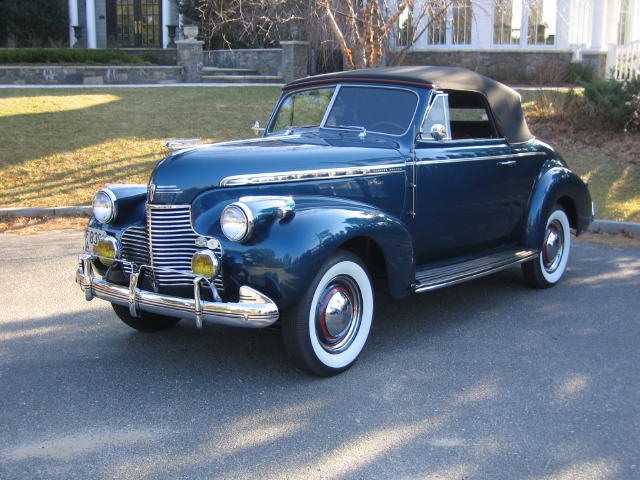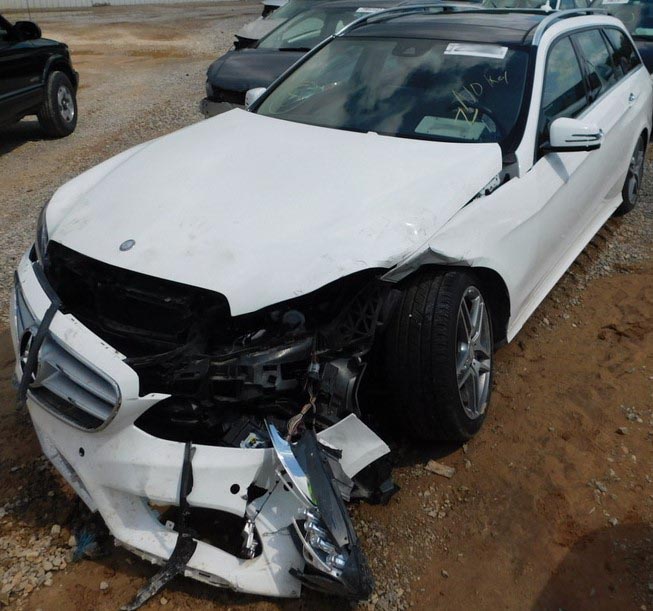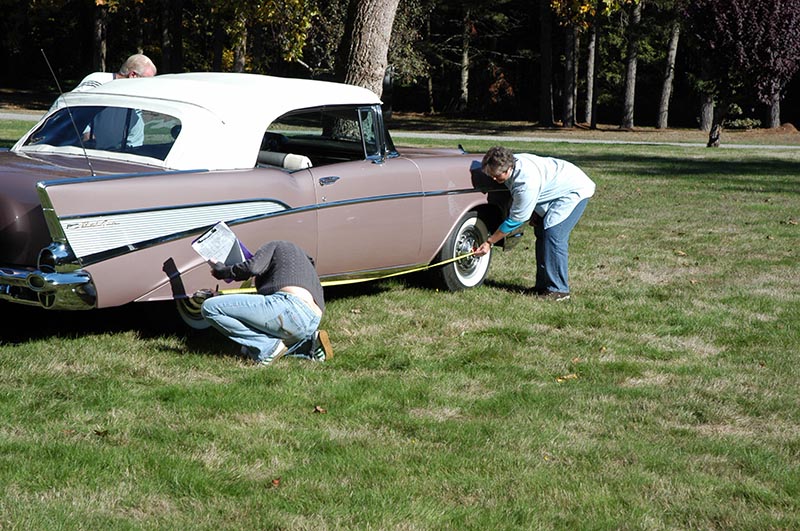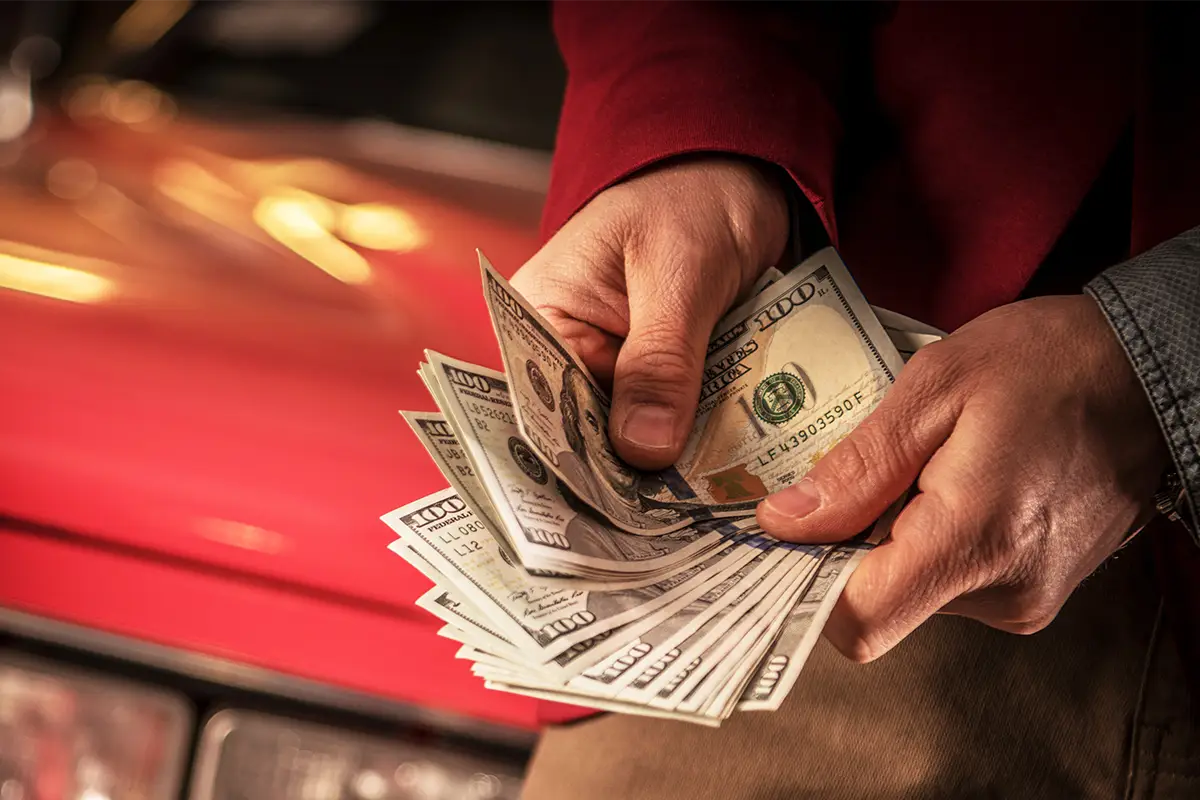
Selling a classic car is rarely just a transaction—it’s often the end of an era. Whether you’ve lovingly restored your vehicle over the years or simply held onto a unique piece of automotive history, parting ways with a classic is different from selling a daily driver. There’s emotion, history, and often a good amount of financial value tied to your car.
This guide is here to help you navigate the process of selling your classic car with clarity and confidence. From preparing your vehicle and understanding its true value to choosing the best place to sell and finalizing the paperwork, we’ll walk you through every major step.
Here’s what you can expect:
Whether you’re selling your first classic car or have done this before, you’ll find practical strategies to help you get the best value—and the smoothest sale possible.
Preparation is Key: Getting Your Classic Ready for Sale
Cleaning & Detailing
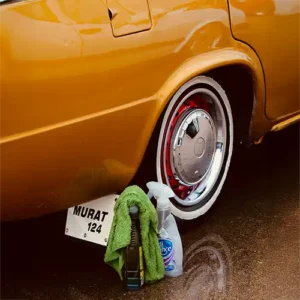
First impressions matter—especially when it comes to classic cars. Buyers are often enthusiasts who appreciate the details, so presenting your vehicle in its best light is essential.
Exterior: Start with a full wash and wax. Consider professional paint correction if necessary to remove oxidation or fine scratches.
Interior: Deep clean carpets, upholstery, headliners, and dashboard surfaces. Leather should be conditioned, vinyl polished, and glass streak-free.
Engine Bay: A clean engine compartment shows pride of ownership. Use degreaser carefully and avoid damaging sensitive components.
Trunk & Undercarriage: These areas often get overlooked but can signal the overall care given to the car. Clean and photograph these as well, especially if rust-free or restored.
Gathering Documentation
Buyers of classic cars care deeply about a vehicle’s history. Strong documentation can significantly increase interest—and value.
Gather the following:
- Clear title (in your name)
- Registration documents
- Maintenance records and logs
- Receipts for restoration work or parts
- Historical documents (e.g., ownership history, prior appraisals)
- Owner’s manuals, service booklets, and show awards (if available)
The more you can show about the car’s past, the more confidence you’ll inspire in prospective buyers.
We cover additional documentation, what to save, and how to save it, in our recent article: Why Documentation is Key for Your Classic Car’s Value.
High-Quality Photography & Videography
Your listing is only as good as your visuals. In today’s digital era, high-quality, detailed photos aren’t just helpful—they’re essential. Buyers shop online, often from across the country, and your photos are their first impression. The more clear, comprehensive, and well-lit your images are, the more legitimate and attractive your listing will appear.
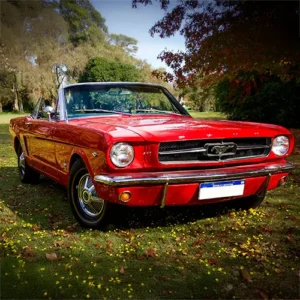
Why This Matters:
- Listings with multiple high-resolution photos get more attention and sell faster.
- Clear, detailed images help buyers feel confident and informed.
- Providing many photos adds credibility—scammers typically offer only 1–2 vague shots. A strong listing should include at least 8-10 images, if not more.
The goal is to eliminate uncertainty and show potential buyers you have nothing to hide. This is one of the easiest ways to set your listing apart.
Tips for Effective Media:
- Take photos in natural light, ideally during “golden hour” (early morning or late afternoon).
- Include shots of the front, rear, sides, interior, engine bay, trunk, and undercarriage.
- Capture close-ups of badges, gauges, special features, and imperfections.
- Use a clean, uncluttered background.
- Add a short video walk-around with the engine running and doors opening/closing to showcase function and sound.
Mechanical Assessment & Necessary Repairs
Mechanical condition can vary widely in the classic car world. Some vehicles are turn-key; others are offered as restoration projects. Neither is inherently bad—but clarity is key.
Have a trusted mechanic perform a safety check and basic diagnostic:
- Brakes
- Tires
- Lights
- Fluids
- Engine function
Make essential repairs if it improves value—but avoid over-investing if the car is already marketable as-is.
If your vehicle isn’t fully operational or is in “barn-find” or “project” condition, that’s okay—just be transparent. Some buyers specifically seek out these opportunities! Antique cars in need of restoration can sell on the marketplace. For more insight, check out our article: Does an Antique Vehicle Need to Be Restored to Be Valuable?
Understanding Your Classic Car’s Value
Why Accurate Valuation Matters
Knowing your classic car’s true market value is one of the most important steps in the selling process. A well-informed valuation sets the foundation for pricing, negotiation, and even how and where you choose to sell. Overpricing can scare off serious buyers, while underpricing could mean leaving thousands of dollars on the table. A clear understanding of your car’s worth gives you confidence and helps manage expectations from the very start.
Beyond pricing, an accurate valuation can also shape your strategy. It influences whether the car is best suited for a private sale, consignment, or auction, and it informs how aggressively you should market it. If your car is highly original, rare, or has a compelling history, knowing its specific market niche allows you to highlight those strengths to the right audience. This targeted approach—supported by real value data—can significantly increase your chances of a successful and satisfying sale.
Researching Comparables (Comps)
Start by comparing your vehicle to similar models in the same condition.
Places to Look:

- Online marketplaces (Hemmings, ClassicCars.com)
- Online auctions (Bring a Trailer archives)
- Live auction results (Mecum, Barrett-Jackson)
- Enthusiast forums and car clubs
- Hagerty Valuation Tools
Value Factors Include:
- Year, make, and model
- Originality vs. modifications
- Vehicle condition (Concours, Excellent, Good, Fair, Project)
- Rarity and production numbers
- Documented provenance
- Market trends and seasonality
The Importance of a Professional Value Appraisal
When it comes to selling a classic car, accurate valuation is more than just setting a price—it’s about presenting your vehicle in the most credible and compelling way. While market research and online valuation tools are helpful starting points, they can only go so far. The uniqueness of classic and collector vehicles—ranging from restoration quality and originality to historical documentation and factory options—requires a more thorough, expert approach.
What Is It?
A professional value appraisal is an official, third-party assessment of your vehicle’s value. A certified appraiser provides a detailed, objective evaluation of your car’s condition and market worth, helping you set a realistic price backed by data and expertise. This not only makes your listing more trustworthy to buyers but also strengthens your position during negotiations and can streamline the sales process.
Why It Helps:
- Sets a credible, data-driven price point
- Increases buyer confidence
- Strengthens your negotiation stance
- Assists with insurance valuation
- Attracts serious collectors and investors
Where to Get One:
When searching for a professional value appraiser for a classic car, look for someone with experience specifically in collector and vintage vehicles. A good appraiser should be certified, unbiased, and have a history of good credentials. They should offer a thorough inspection process, provide detailed written reports with photos, and be familiar with current market trends and comparable sales. The appraiser should be a neutral third party, and not associated with the seller or buyer. Choosing an appraiser with classic car expertise ensures you receive a fair, well-supported valuation.
At Auto Appraisal Group (AAG), we offer specialized Resale Value Appraisal services tailored specifically for classic and collector cars. AAG reports include an estimated market value range based on recent comparable sales, thorough documentation, and a physical inspection. This level of insight can be particularly helpful if your vehicle has unique modifications, rare factory options, or a complex history.
A credible appraisal doesn’t just validate your asking price—it adds confidence and legitimacy to your listing. Whether you’re selling through a private sale, auction, or dealership, having an appraisal from a trusted name like AAG can help attract serious buyers and ensure you get fair value for your investment.
AAG also offers a Document Your Auto Service that documents the components and features specific to your vehicle. While the Resale Appraisal includes a value range, the doc your auto document does not include a value and can be shown to prospective buyers, highlighting the uniqueness and special options of your vehicle.
Choosing Your Selling Avenue: Where to Sell Your Classic Car
When it comes time to sell your classic car, there’s no one-size-fits-all approach. The best selling method depends on your vehicle’s value, your timeline, and how involved you want to be in the process. Below is a breakdown of the most common selling avenues—along with their key pros and cons—to help you choose the option that best fits your needs.
Private Sale
Pros:
- Maximum control over price and negotiation
- Potential for the highest return
Cons:
- Time-intensive
- Requires managing inquiries and showings
- Must handle paperwork and screening buyers
- Fees may apply if using a listing service
Where to List:
- Hemmings
- ClassicCars.com
- Car club newsletters
- Collector forums
- Local car shows or community boards
Classic Car Dealership / Consignment
Pros:
- Dealership handles marketing, negotiations, and paperwork
- Access to ready buyers
- Typically quicker sale
Cons:
- Dealerships often offer below-market value
- Consignment involves fees or commission
- Less control over the final sale price
Dealers may also ask well above the market price, leading to a slower sale, and then charge a monthly storage fee to keep your vehicle on the showroom floor.

Auctions (Live & Online)
Online & Live Auctions:
Pros:
- High exposure and motivated buyers
- Bidding wars can drive price above expectations
- Defined sale window
Cons:
- Seller fees and commissions
- No guarantee of sale
- Less price control
- Transport and preparation costs
Online Marketplaces (General & Specialty)
eBay Motors and others can provide broad reach, while specialty sites attract more informed buyers.
Pros:
- Broad or targeted visibility
- Lower fees than auctions
Cons:
- Requires active listing management
- Higher potential for scams or tire-kickers
Which Avenue is Right for You?
The right selling route often depends on your car’s condition, rarity, and your personal priorities. If you’re aiming for top dollar and have the time to manage listings and inquiries, a private sale may offer the best return.
For those who prefer a hands-off experience, consignment with a reputable dealer or classic car auction can take the pressure off while still reaching a targeted audience.
Online platforms give you broad reach, but require strong listing management and buyer screening.
Ultimately, weigh the pros and cons of each method against your goals, and don’t hesitate to combine avenues—such as listing privately while consulting a dealer—to maximize your chances of a successful, satisfying sale.
| Selling Avenue | Potential Return | Effort Required | Time to Sell | Level of Control | Best For |
| Private Sale | High | High | Medium-Long | High | Sellers wanting top dollar and control |
| Dealership/Consignment | Medium | Low-Medium | Short-Medium | Low-Medium | Sellers preferring a hassle-free process |
| Live Auction (e.g. Mecum) | Medium-High | Medium | Short | Low | Rare/classic cars with potential bidding interest |
| Online Auction (e.g. BaT) | Medium-High | Medium | Short-Medium | Medium | Well-presented classics, sellers comfortable online |
| Online Marketplaces (eBay, etc.) | Medium | Medium | Medium | Medium | Broad exposure, tech-savvy sellers |
Quick Tips for Getting the Best Value for Your Classic Car
Be Honest: Transparency about condition and history builds trust and avoids post-sale issues.
Write a Strong Description: Tell the story—why it’s special, what’s been done to it, what it needs. Use specific keywords.
Price It Right: Let data and a professional appraisal guide your asking price.
Know Your Audience: Using what you know about your car, tailor your listing to collectors, restorers, or enthusiasts.
Be Patient: Classics don’t always sell fast. The right buyer often takes time.
Negotiate Strategically: Know your bottom line and stick to it. Stay firm, courteous, and professional.
Screen Buyers: Ask qualifying questions, and take precautions for in-person showings or test drives.
Finalizing the Sale: Paperwork and Payment
Once you’ve found the right buyer and agreed on a price, the final step is making the sale official—and protecting both parties in the process. This part may not be as exciting as polishing chrome or negotiating a deal, but it’s absolutely critical. Here’s what you need to know to wrap up your sale with confidence.
Bill of Sale
A bill of sale is a crucial legal document that finalizes the transaction between you and the buyer. It serves as written proof that the vehicle was sold and transferred voluntarily, outlining the terms of the sale and protecting both parties in case of future disputes. Even in states where it isn’t required, having a signed bill of sale is always a smart move.
Your bill of sale should include:

- Full names and contact information for both the seller and buyer.
- Vehicle details: Year, Make, Model, VIN (Vehicle Identification Number), mileage (odometer reading at the time of sale), and license plate number if applicable.
- Sale price and payment method (e.g., cash, cashier’s check, wire transfer).
- Date of the sale and the location where the transaction took place.
- An “As-Is” clause, stating that the vehicle is being sold without any warranties, and that the buyer accepts the condition of the car at the time of sale. This is especially important for classic cars, which may have quirks, wear, or modifications that differ from modern expectations.
- Signatures of both parties, with printed names and the date. If possible, have the bill of sale notarized for added legal protection—some states require this.
Templates can often be found through your state’s DMV website or downloaded from reputable legal form providers. It’s a good idea to keep a signed copy for your records and provide one to the buyer as well.
Title Transfer
Transferring the title is one of the most important steps in legally finalizing the sale of your classic car. The vehicle title proves ownership and must be properly signed over to the buyer according to your state’s Department of Motor Vehicles (DMV) requirements. If the title is not transferred correctly, you could remain liable for anything that happens with the car after the sale.
Here’s what to do:
- Make sure you are listed as the legal owner on the title, and that there are no outstanding liens (unless the sale is clearing them).
- On the back of the title, complete the seller’s section with accurate information, including:
- Date of sale
- Odometer reading
- Sale price
- Your signature (and printed name)
- Buyers must also sign where indicated to confirm the transfer.
- Some states may require a notary signature, so check your local DMV regulations.
- Make a photocopy or scan of the signed title for your records before handing it over.
If your title is lost or damaged, request a duplicate from your DMV before the sale—you cannot legally sell a vehicle without a valid title. Requirements for title transfer may vary state-to-state, check your location regulations for ensure you properly handle your title transfer.
Secure Payment
Getting paid securely is just as important as finding the right buyer. Classic cars represent a significant investment, and large-sum transactions require careful handling to avoid scams and legal issues.
Recommended payment methods:
- Cash: Only accept cash for in-person sales, and verify the bills at your bank before transferring the car and title.
- Cashier’s Check: A safer alternative to personal checks. Contact the issuing bank to verify the check is legitimate and funded before releasing the car.
- Wire Transfer: A secure option for long-distance sales. Confirm that the funds are fully cleared in your account—not pending—before finalizing anything.
Avoid:
- Personal checks
- Online payment apps for large amounts
- Third-party payment schemes or “overpayment refund” scams
Pro Tip: Arrange the exchange in a public place (like a bank parking lot), and if you’re handling a high-value sale, consider having a friend present or using a secure escrow service for added protection.
Notify DMV and Insurance
Once the sale is complete, you’ll want to officially remove your name from any legal responsibility for the vehicle.

Here’s what to do next:
- Notify your state DMV: Many states require you to submit a Notice of Transfer or Release of Liability form. This alerts the DMV that you no longer own the vehicle and protects you from any future tickets, taxes, or legal claims tied to the car.
- Cancel your insurance policy: Contact your auto insurance provider to terminate coverage for the vehicle. If you have coverage bundled with other vehicles, make sure they adjust your policy accordingly.
- If you transferred license plates to the buyer (not all states allow this), make sure that was done legally; if not, remove the plates before handing the car over.
Taking these final steps ensures your responsibilities end with the sale—and gives you peace of mind as your classic car moves on to its next chapter.
What AAG Can Do for You
Selling a classic car is more than just a transaction—it’s the end of one story and the beginning of another. Whether your vehicle is a meticulously restored showpiece or a cherished project with miles of memories, getting the best value from your sale requires thoughtful preparation, an accurate understanding of your car’s worth, and choosing the right selling strategy.
At every stage of the journey, Auto Appraisal Group is here to help you make informed, confident decisions. Our Value Appraisal Services offer detailed, professional assessments that reflect the true market value of your classic vehicle—whether you’re selling, insuring, or negotiating. From resale value appraisals to in-depth pre-purchase inspections, AAG provides the kind of trusted, objective documentation that buyers respect and sellers rely on. These services not only help set realistic price expectations, but also add credibility to your listing and peace of mind during negotiations.
Remember:
- Preparation matters—clean, document, and present your vehicle well.
- Accurate valuation is key—don’t guess what your car is worth; get it professionally appraised.
- Choose your sales channel wisely—match your car and your goals to the right marketplace.
- Be transparent and smart—strong descriptions, honest communication, and clear paperwork make all the difference.
With the right approach—and the right appraisal partner—selling your classic car can be a rewarding and profitable experience. Whether this is your first time or your fifth, you don’t have to do it alone.
Let AAG help you showcase your car’s true value.
📞 Contact us today to schedule a professional appraisal or learn more about how we can support your sale:
👉 Explore AAG’s Value Appraisal Services
We wish you the best of luck in finding the right buyer and passing your classic on to someone who will appreciate it just as much as you have. Happy selling!
FAQ
What is the best way to sell a classic car quickly?
List it on targeted platforms like Hemmings or Bring a Trailer, price it realistically based on a professional appraisal, and provide excellent photos and documentation.
How do I avoid scams when selling a classic car?
- Use secure payment methods
- Avoid overpayment/refund scams
- Never release the title or car before funds clear
- Learn more in our article: Common Classic Car Scams
Should I restore my classic car before selling it?
It depends on the car’s condition, rarity, and buyer interest. Restoration can increase value—but may not always yield a return on investment. Read more here: Does an Antique Vehicle Need to Be Restored?


